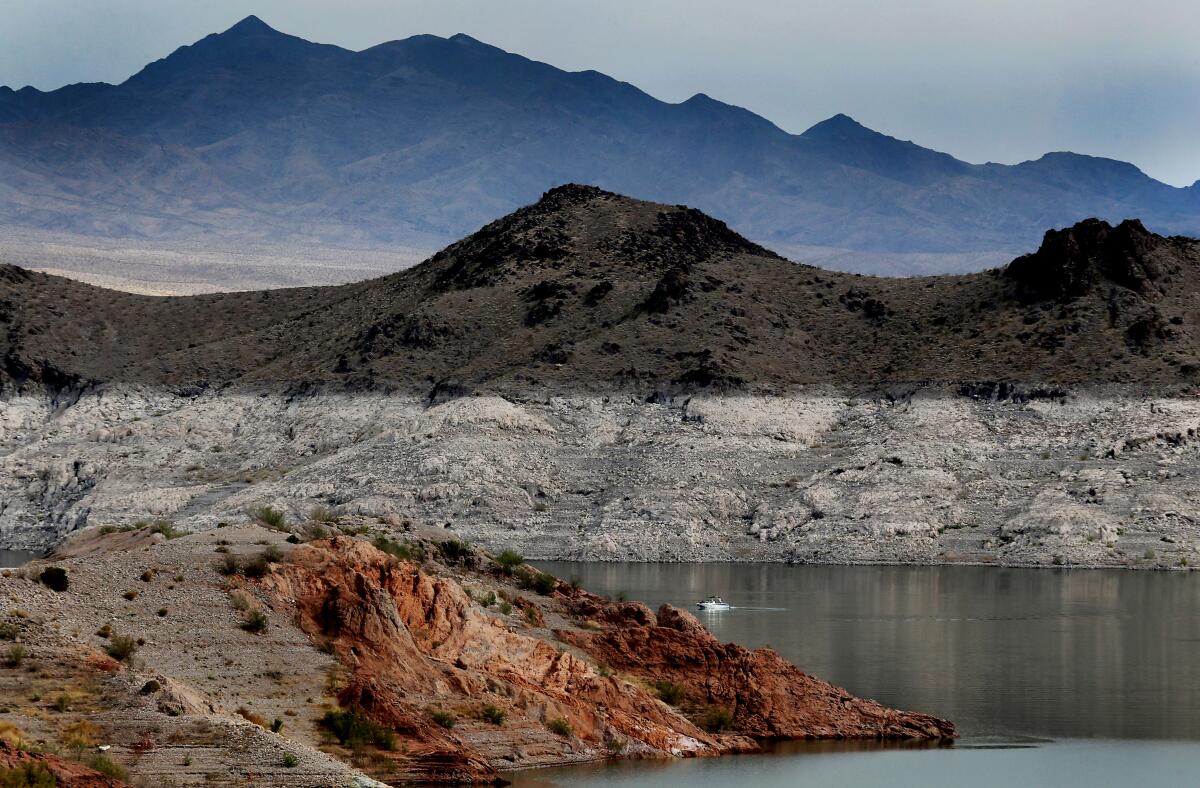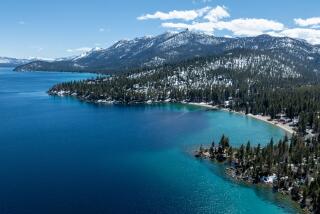Lake Mead drops to a record low amid drought

- Share via
ALBUQUERQUE — Lake Mead, a key reservoir on the Colorado River, has dipped to a record low level in the latest evidence of drought’s grip on the region.
The surface elevation of the lake along the Nevada-Arizona border dipped to 1,071.56 feet at 11 p.m. Wednesday. That level was last recorded in July 2016 and is 18.5 feet lower than one year ago, according to the U.S. Bureau of Reclamation. It’s the lowest level since Lake Mead was filled in the 1930s.
“We’re expecting the reservoir to keep declining until November. Then it should start to rebound,” said Bureau of Reclamation spokeswoman Patti Aaron.
The water level affects the recreation industry at one of the largest artificial reservoirs in the country and the efficiency of hydropower-generation at Hoover Dam.
It won’t be used to determine next year’s water deliveries to California, Arizona and Nevada until August, when the Bureau of Reclamation issues an official projection. Already, the agency has said it expects to make its first-ever shortage declaration prompting cuts in Arizona and Nevada.
“People are certainly concerned,” Aaron said. “You look at the reservoir and it’s concerning.”
Gov. Gavin Newsom has extended the emergency drought order to 41 counties — dramatically expanding his order from nearly three weeks ago.
Lake Mead levels ebb and flow throughout the year depending on weather patterns and how much water is consumed or evaporates. Officials project that the lake will fall to 1,064 feet before rebounding in November, when agricultural needs decrease, Aaron said.
States, water districts and tribes have propped up Lake Mead over the years through various agreements to keep it from falling to a point where it could not deliver water downstream.
The Colorado River supplies 40 million people in Arizona, California, Colorado, Nevada, New Mexico, Utah and Wyoming as well as a $5-billion-a-year agricultural industry.
More to Read
Sign up for Essential California
The most important California stories and recommendations in your inbox every morning.
You may occasionally receive promotional content from the Los Angeles Times.













